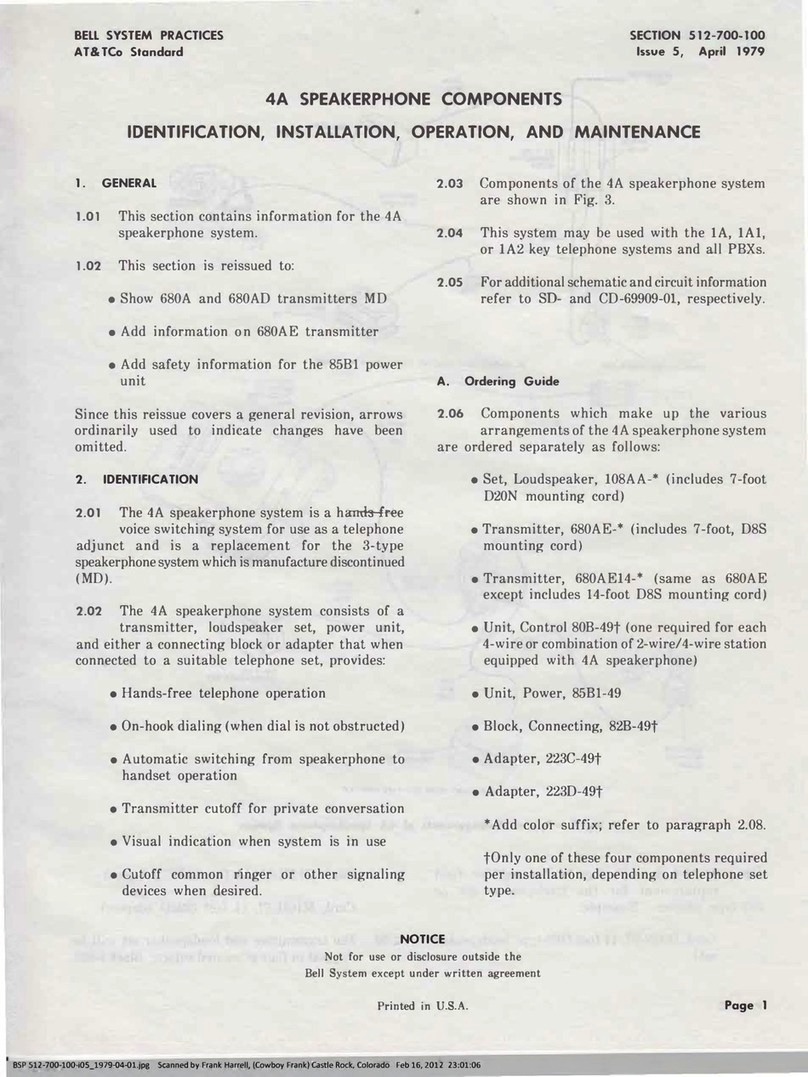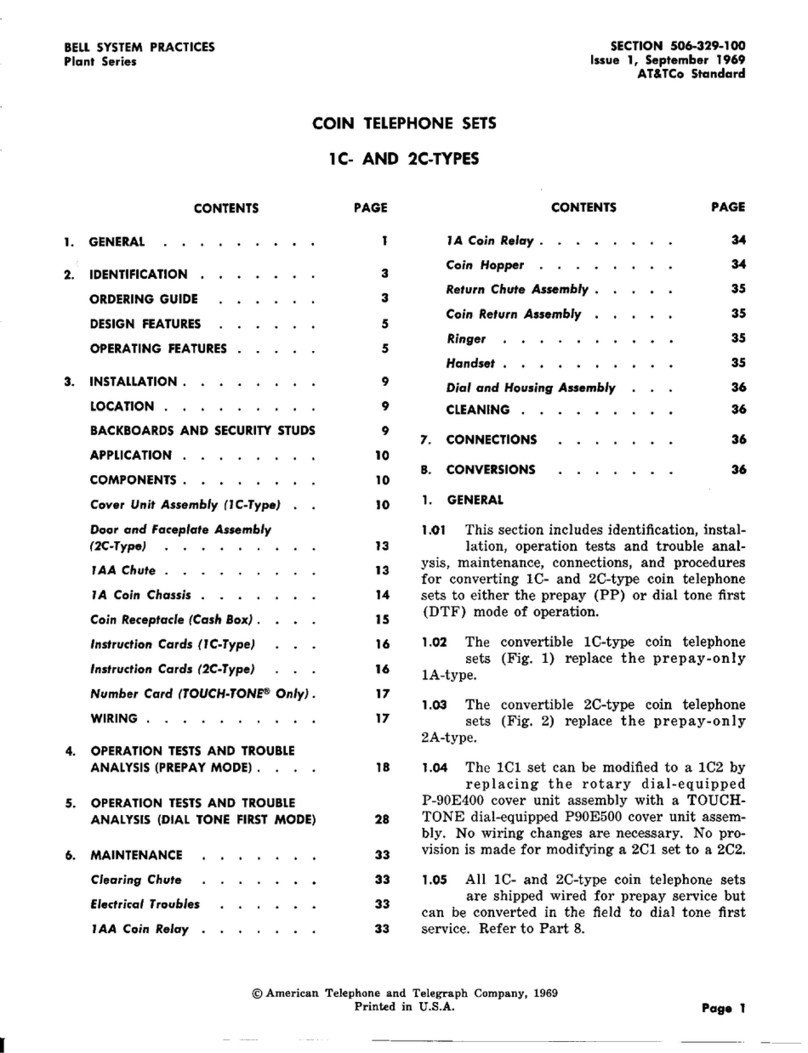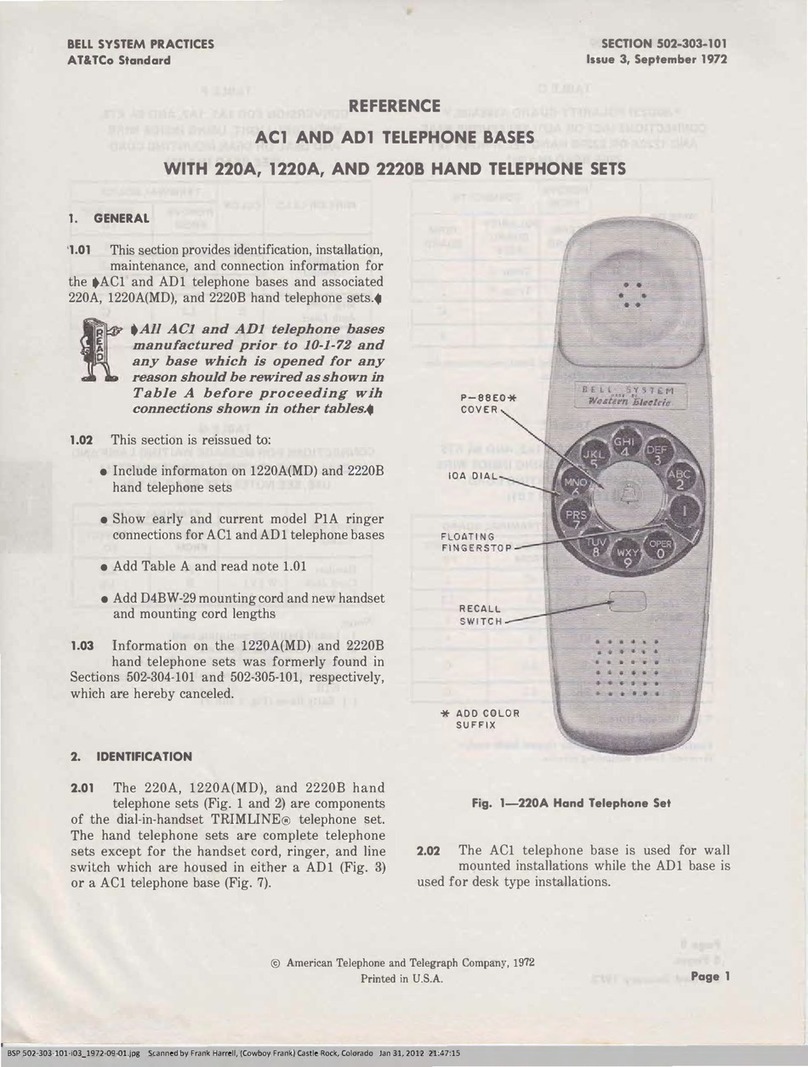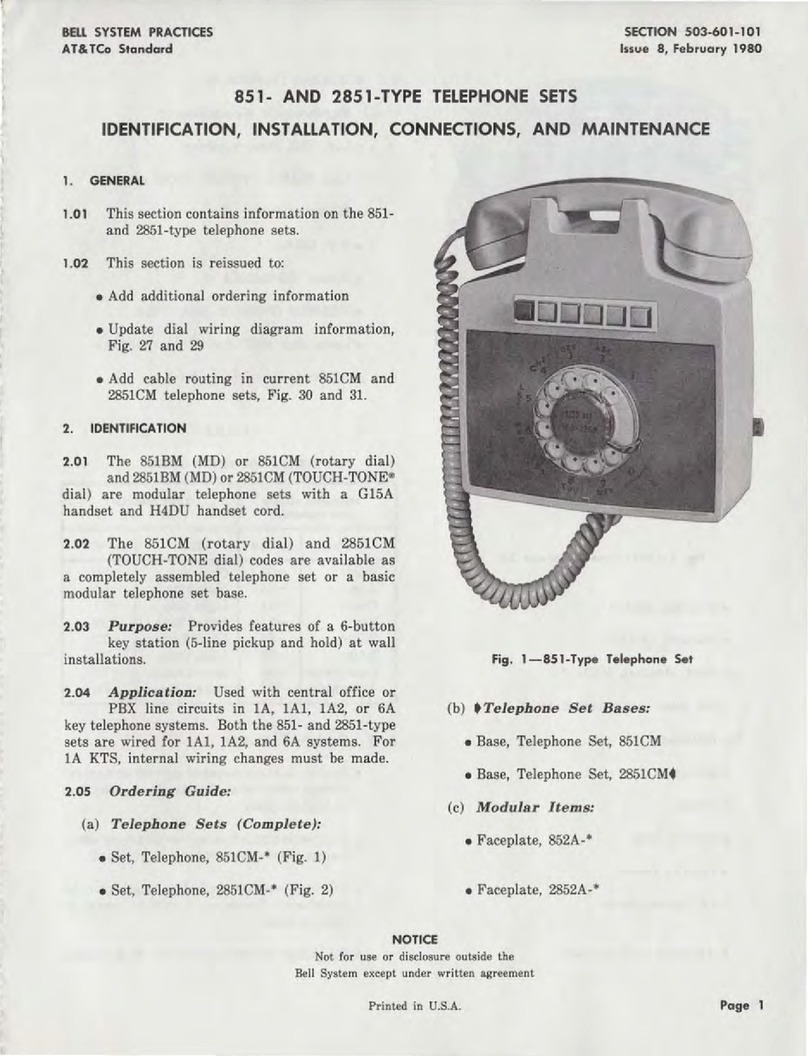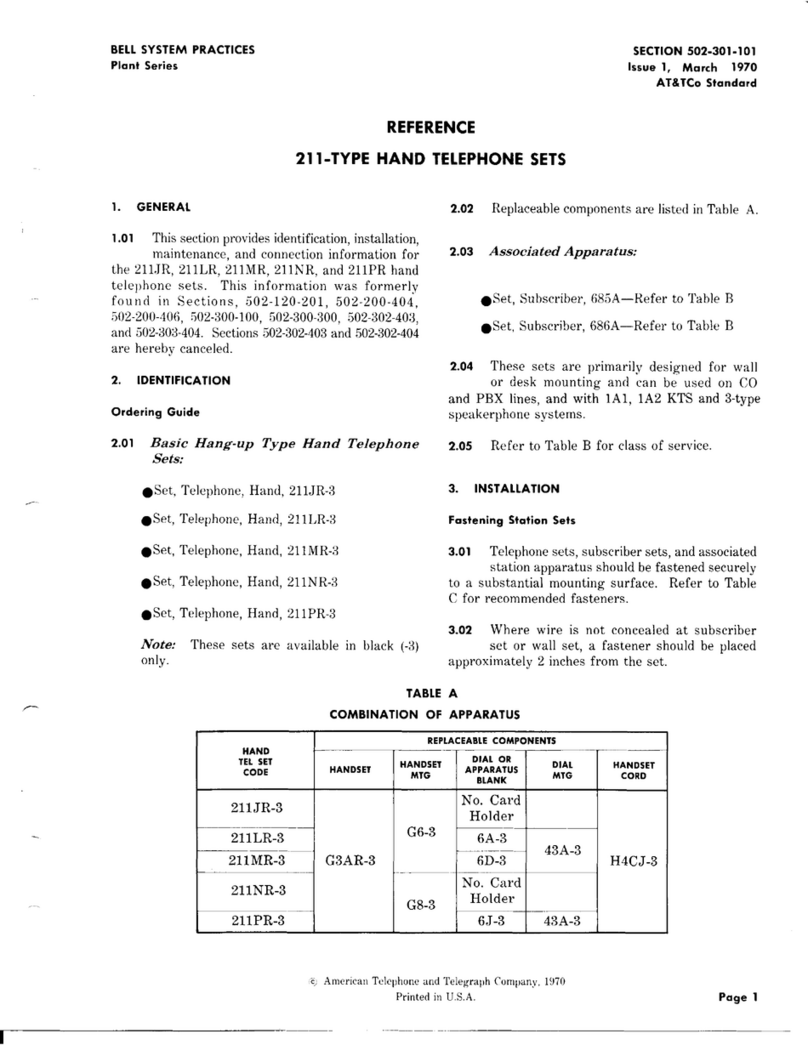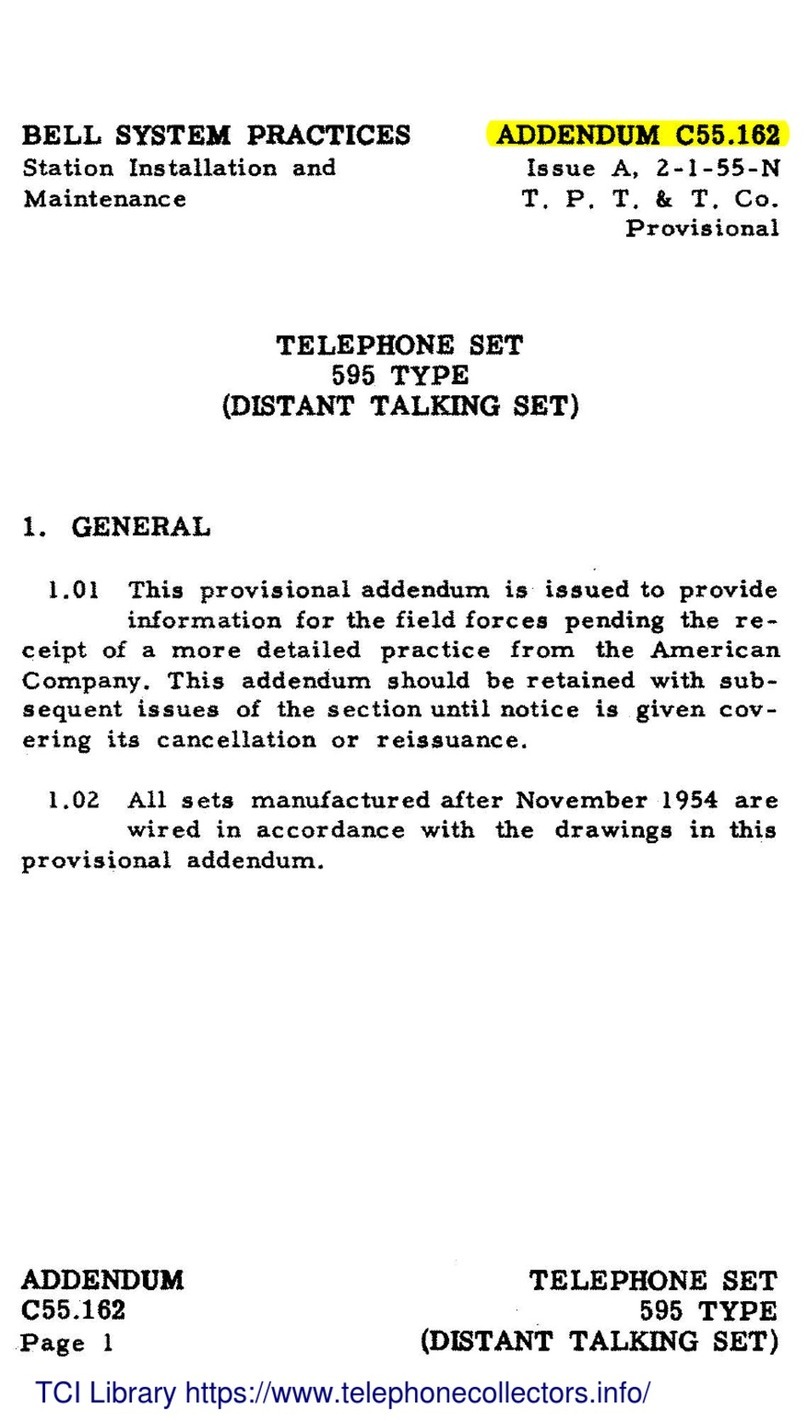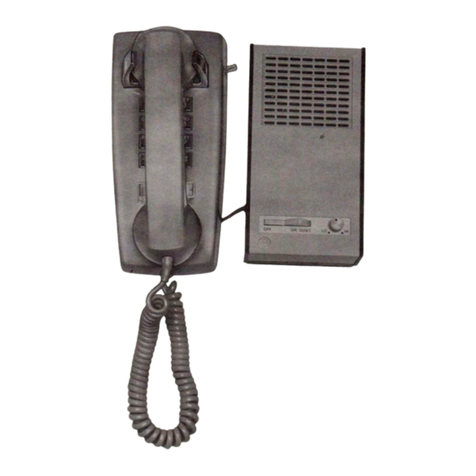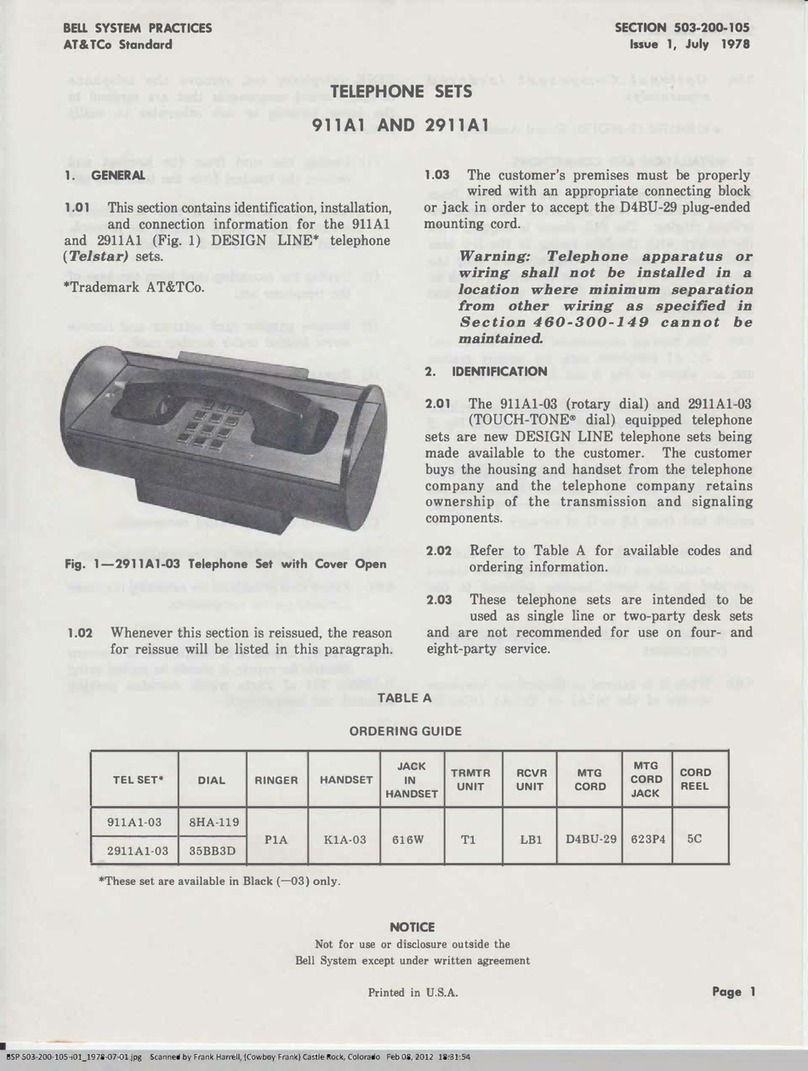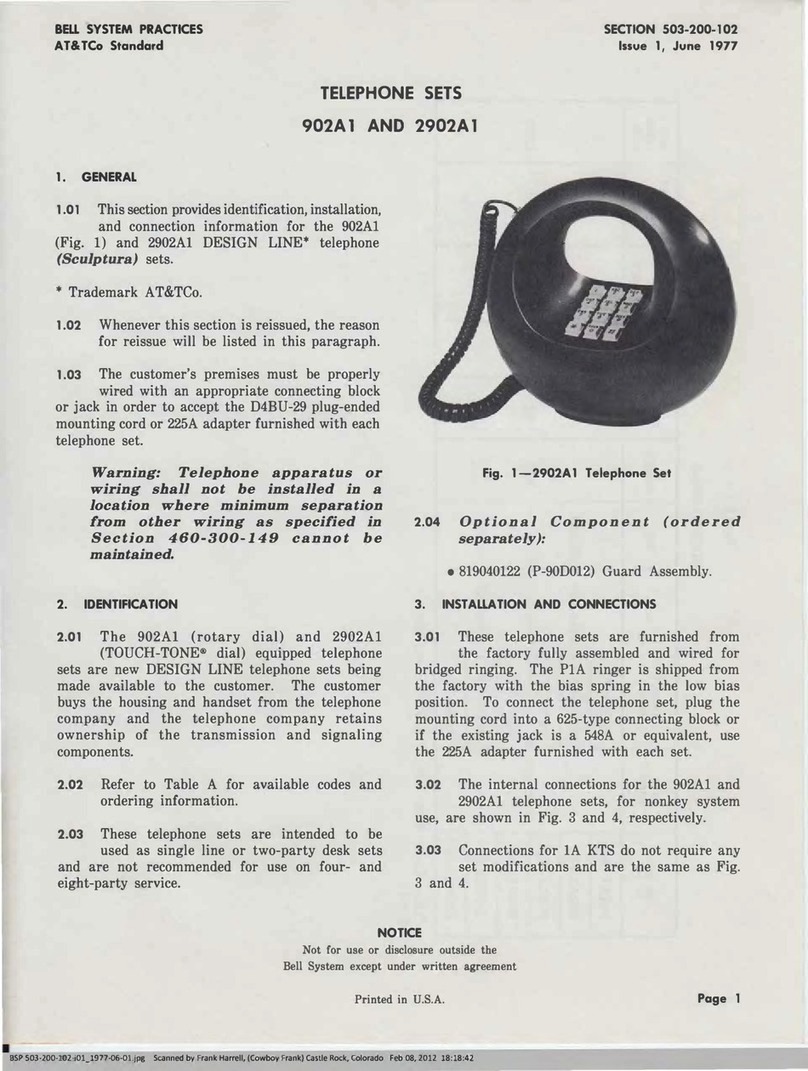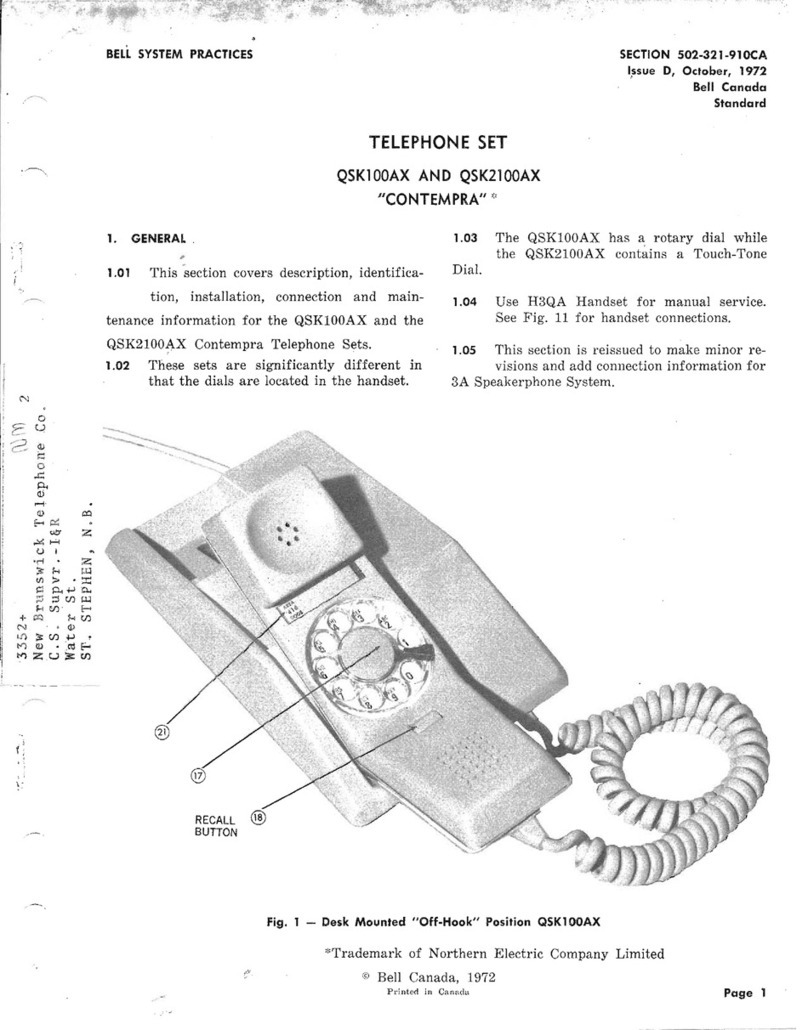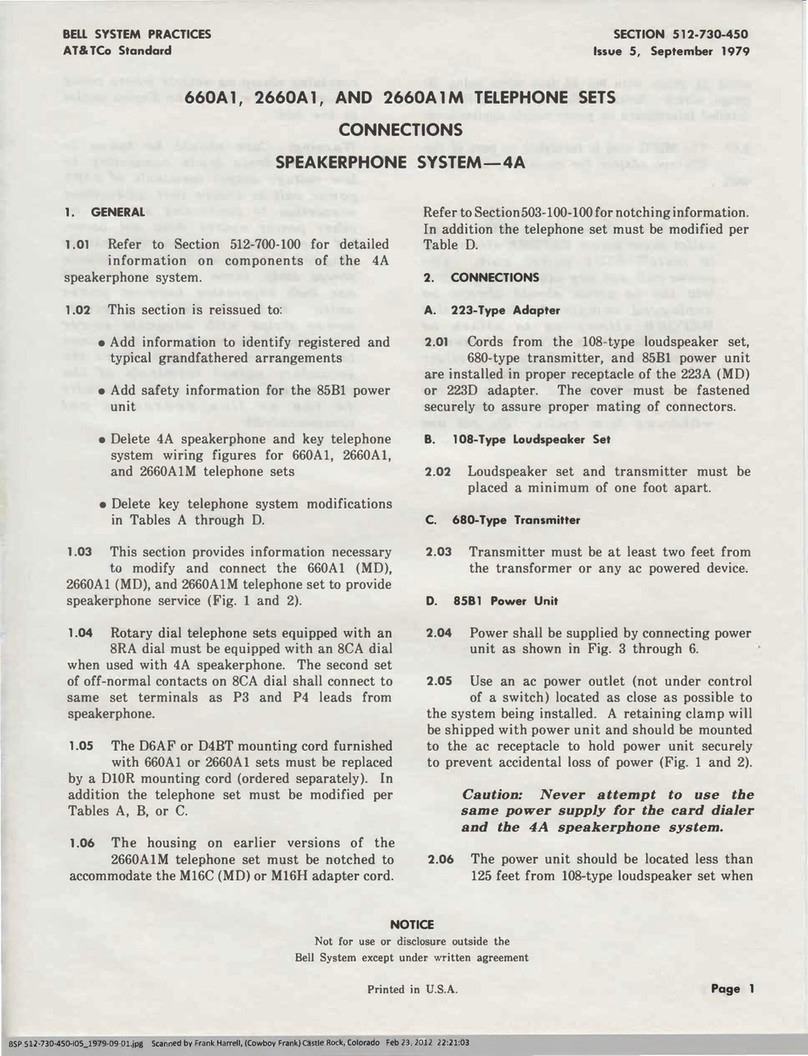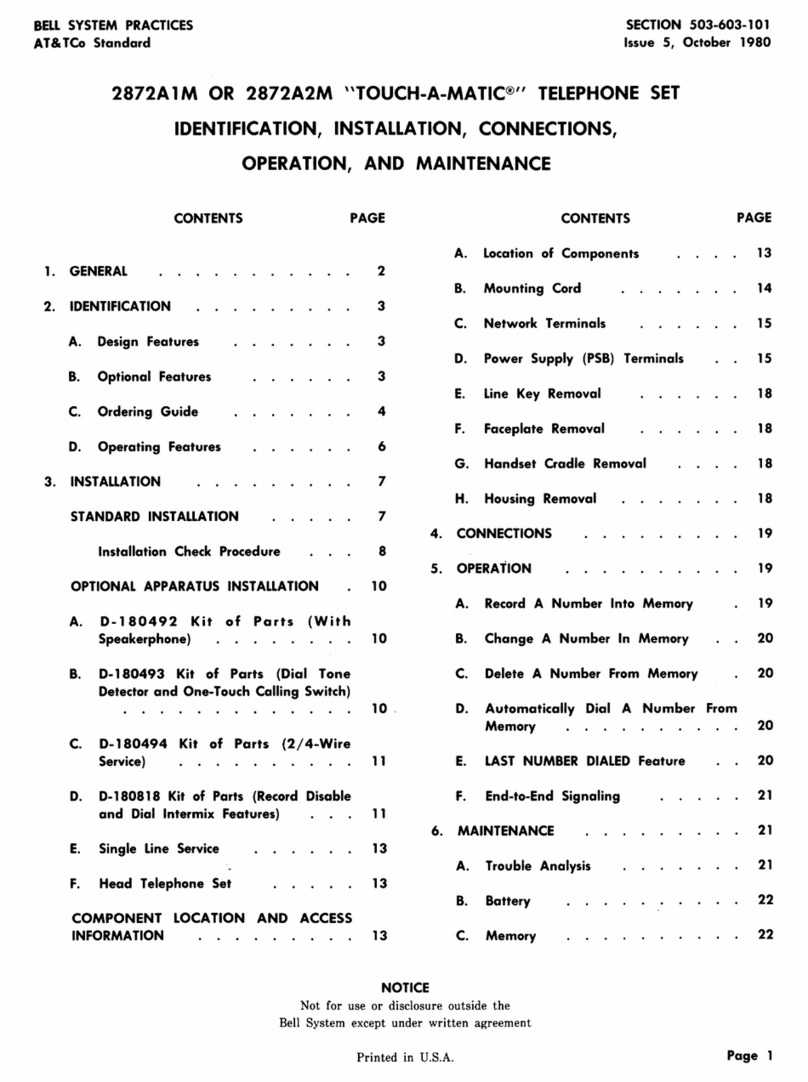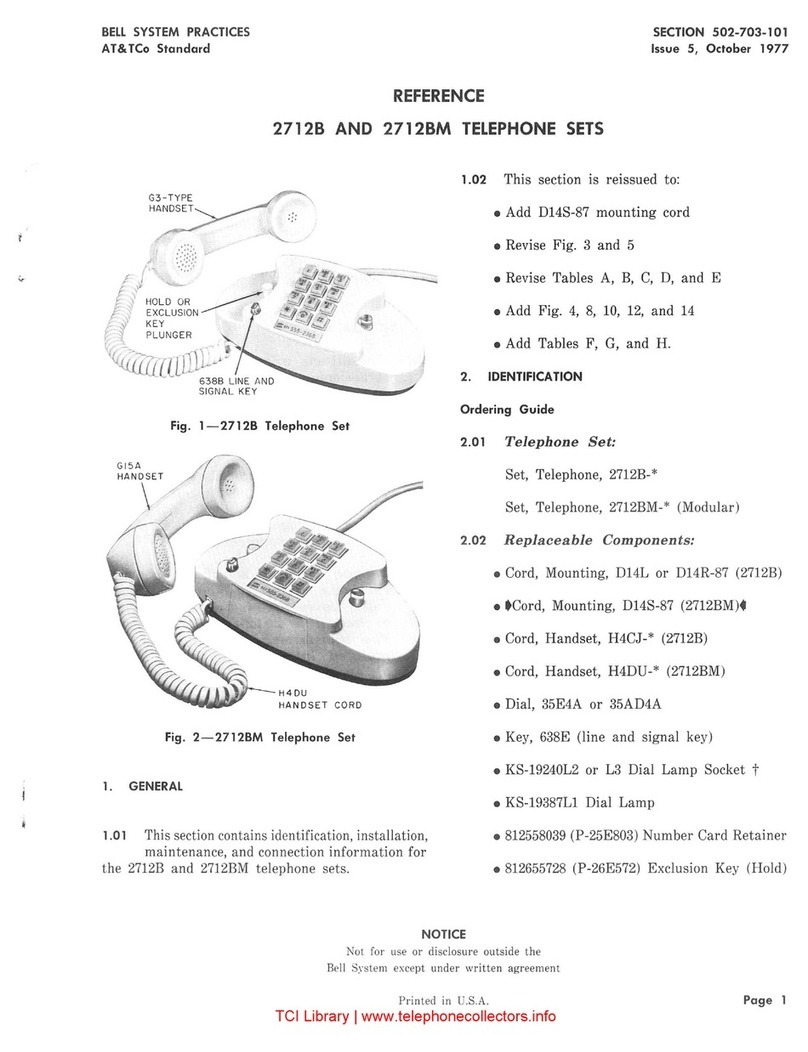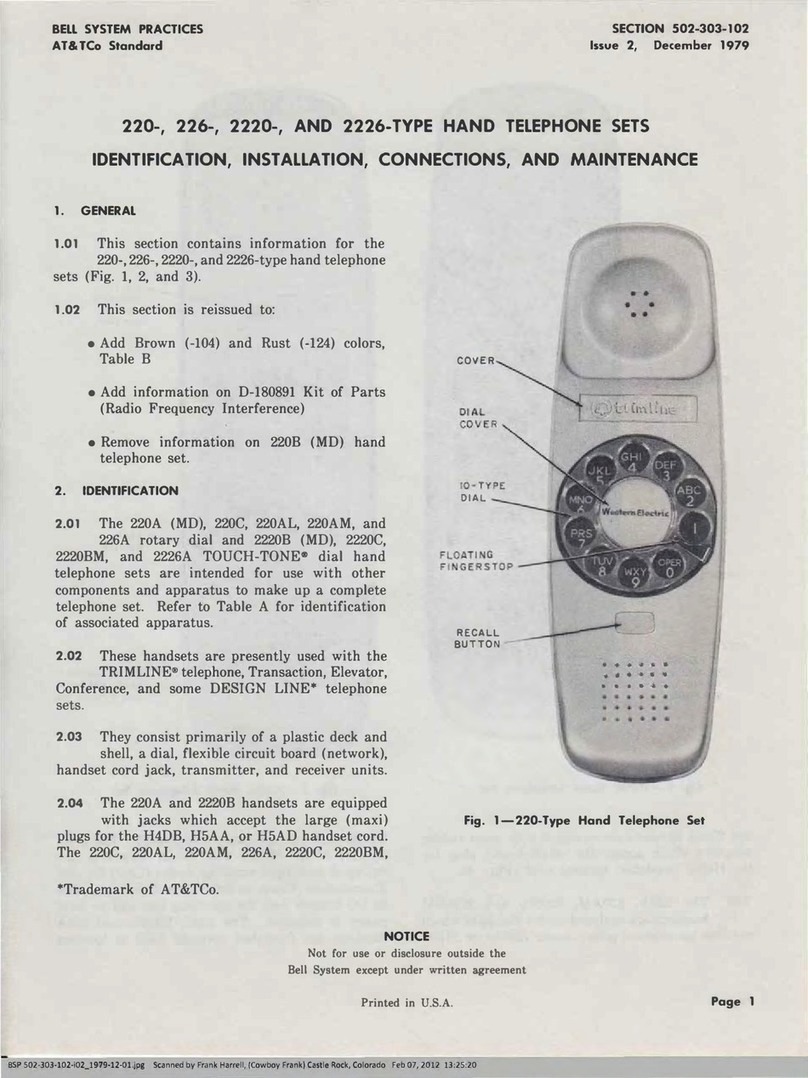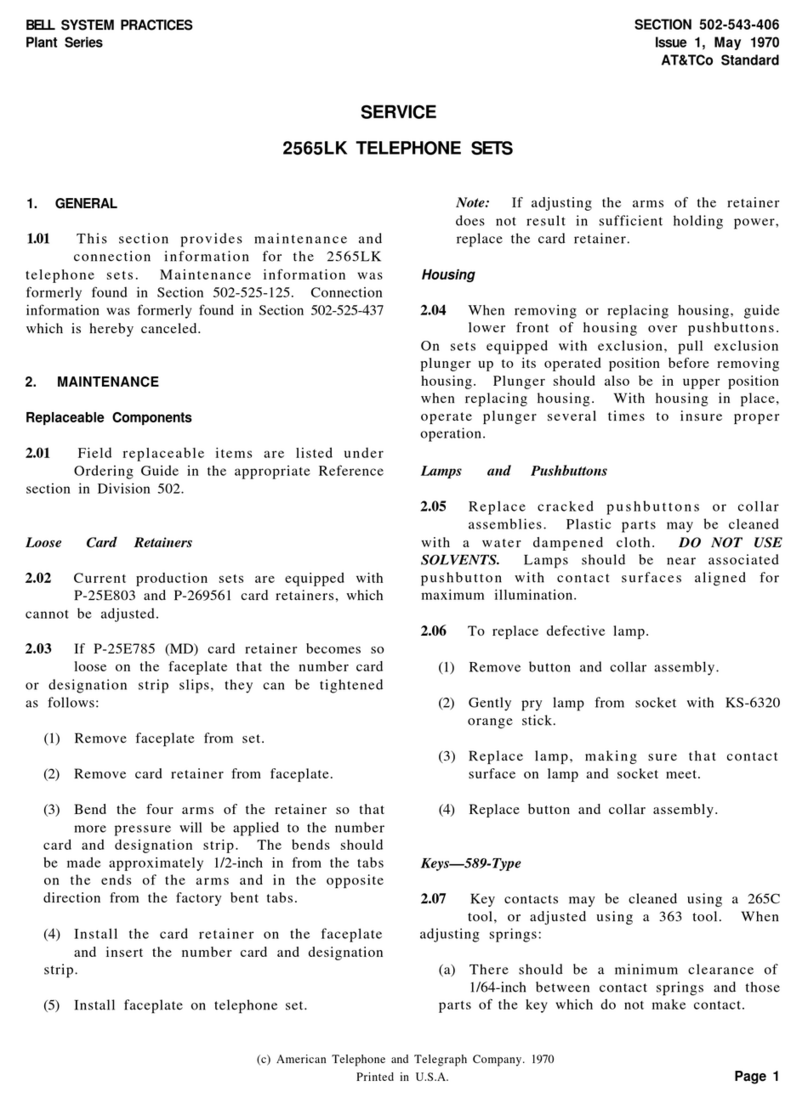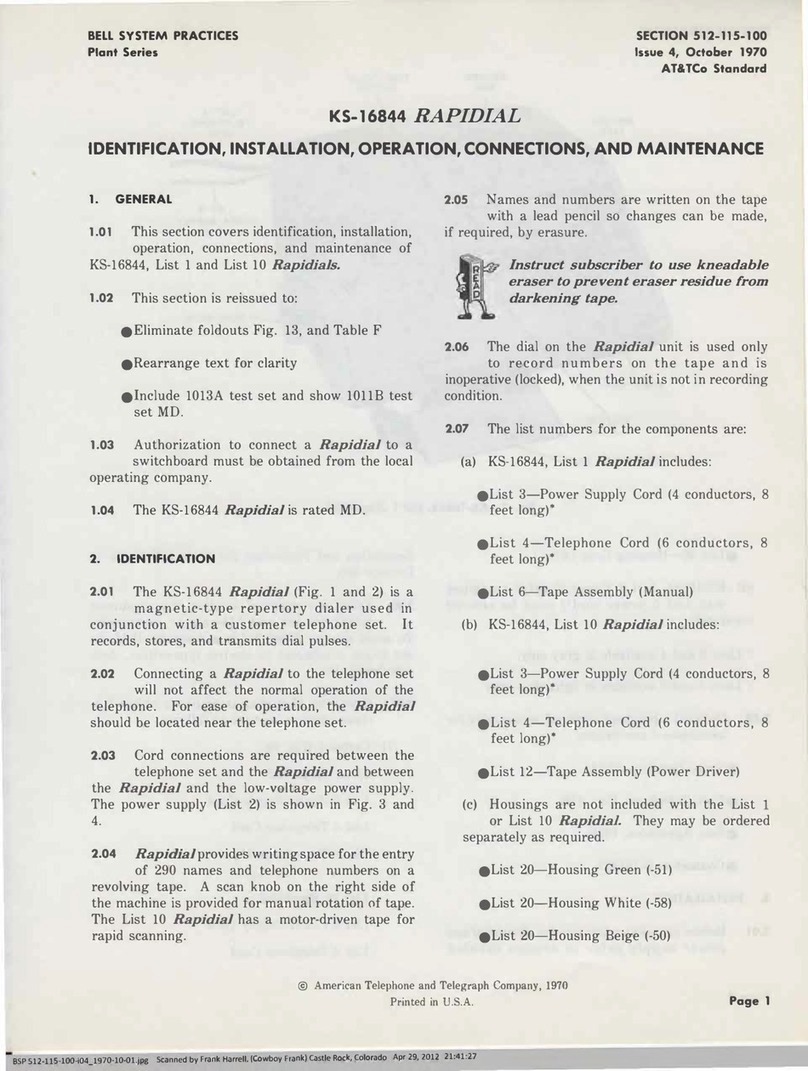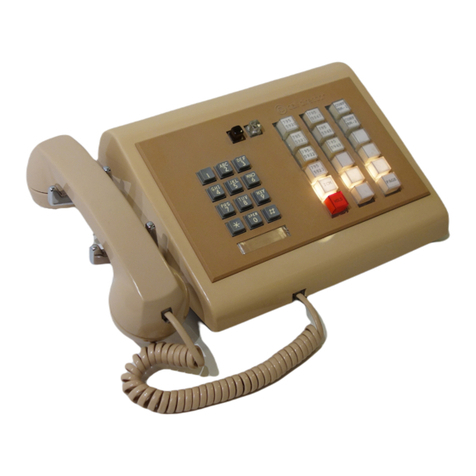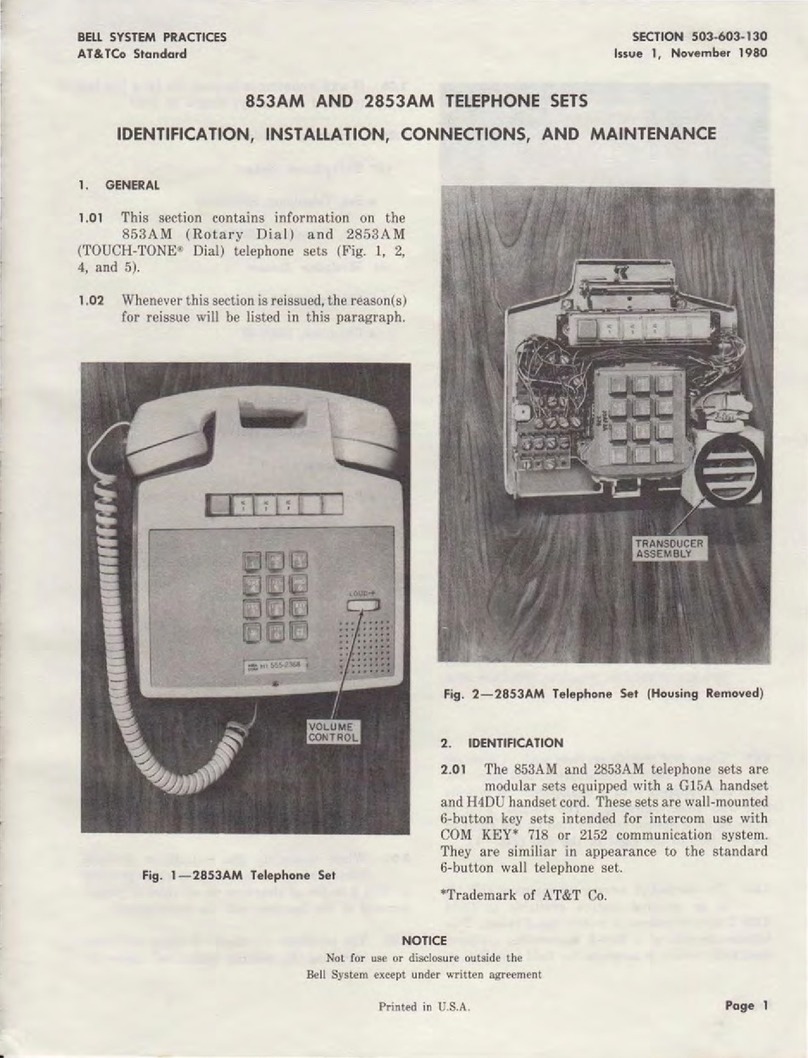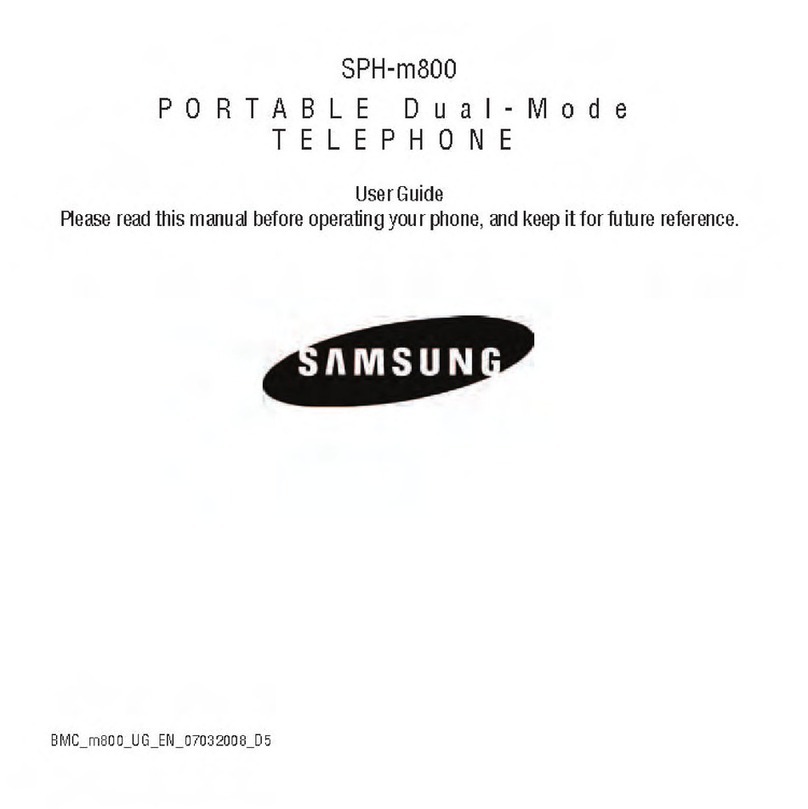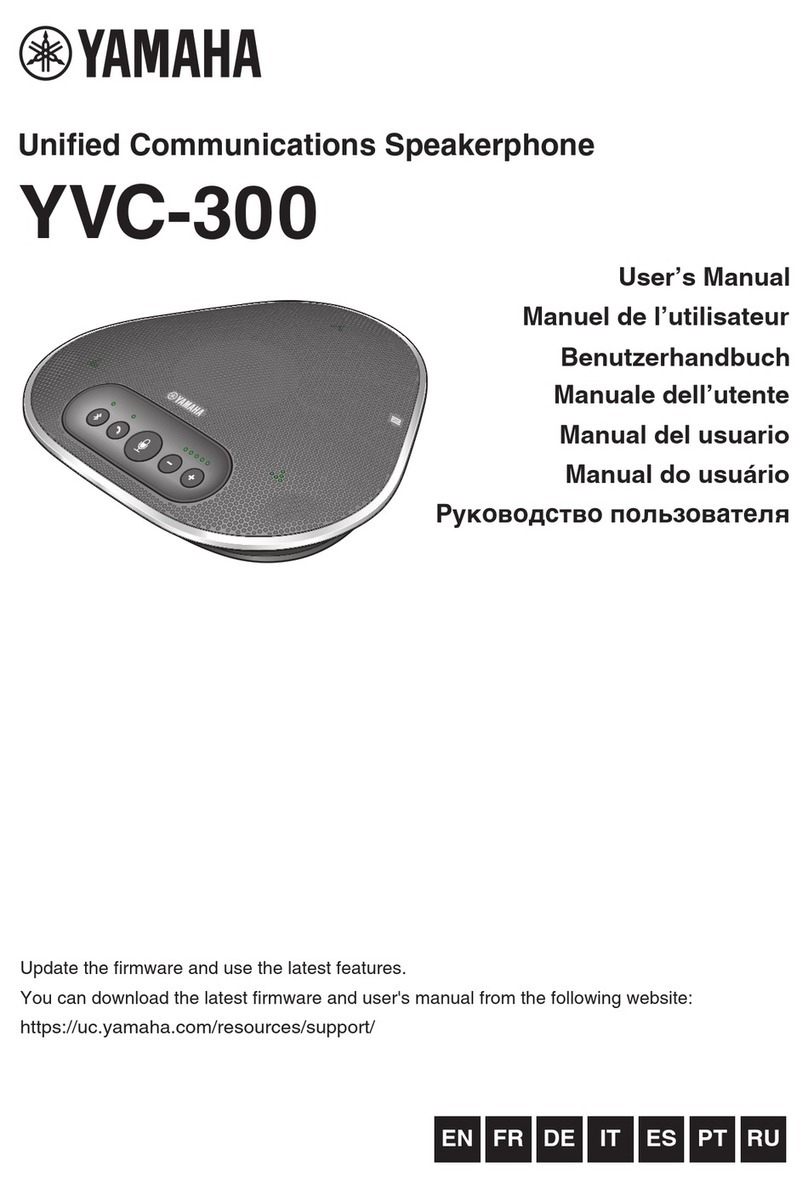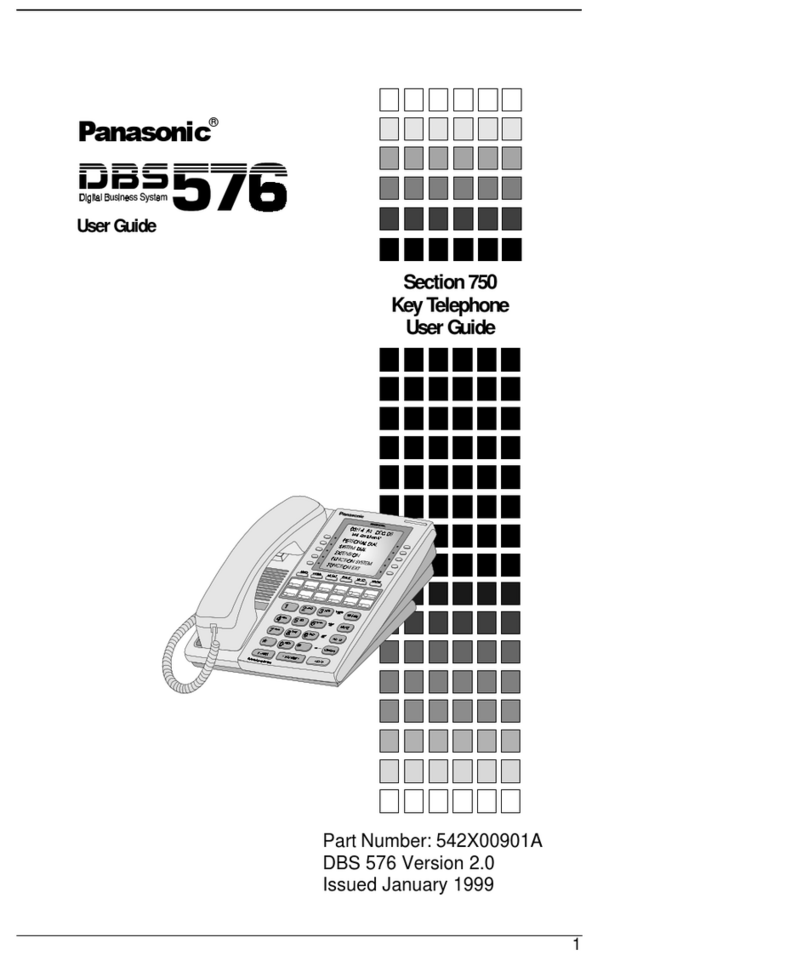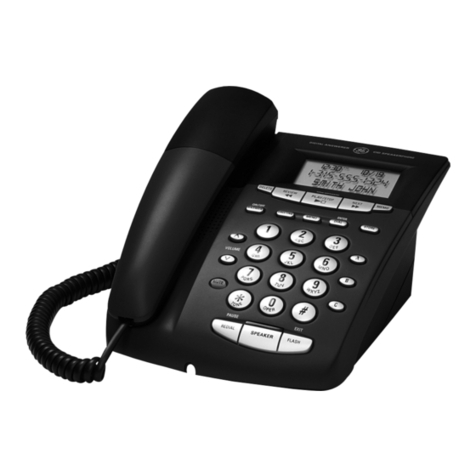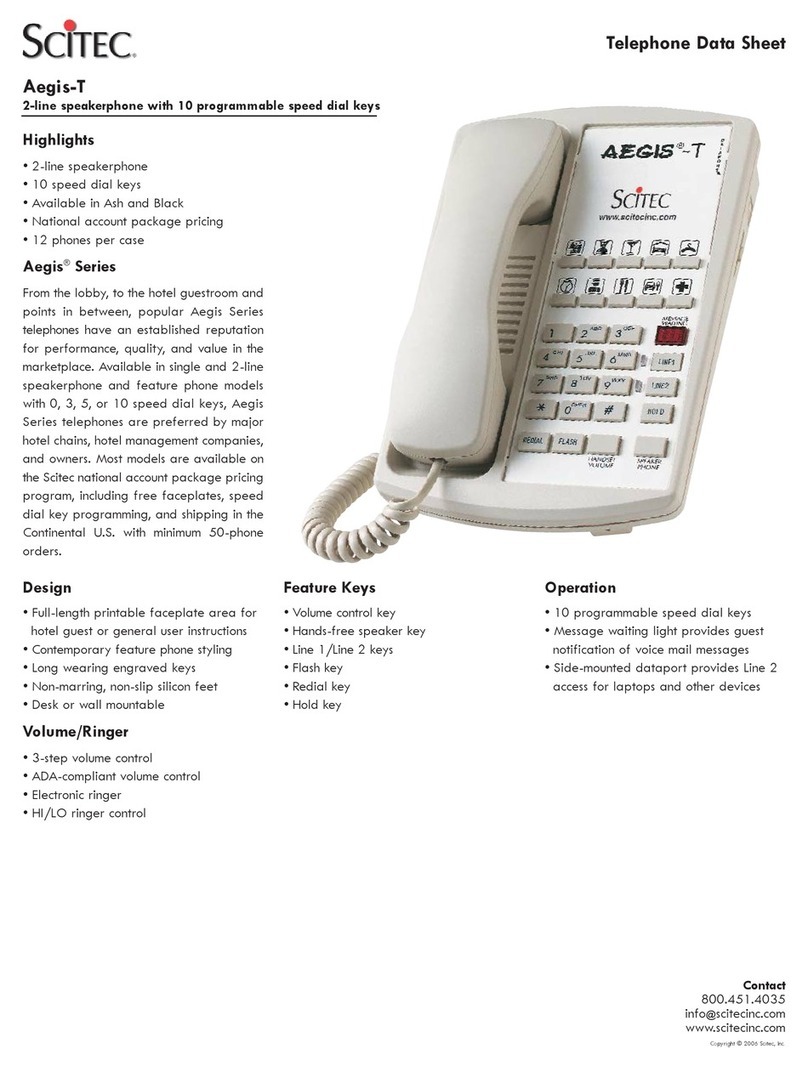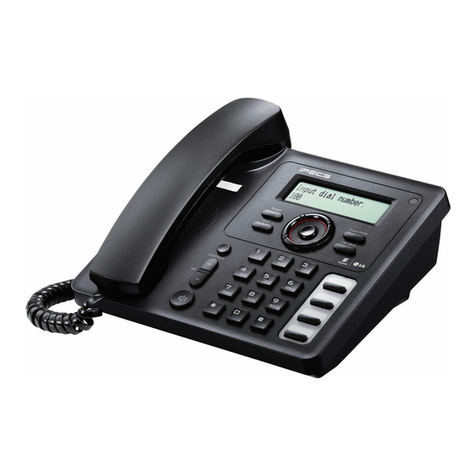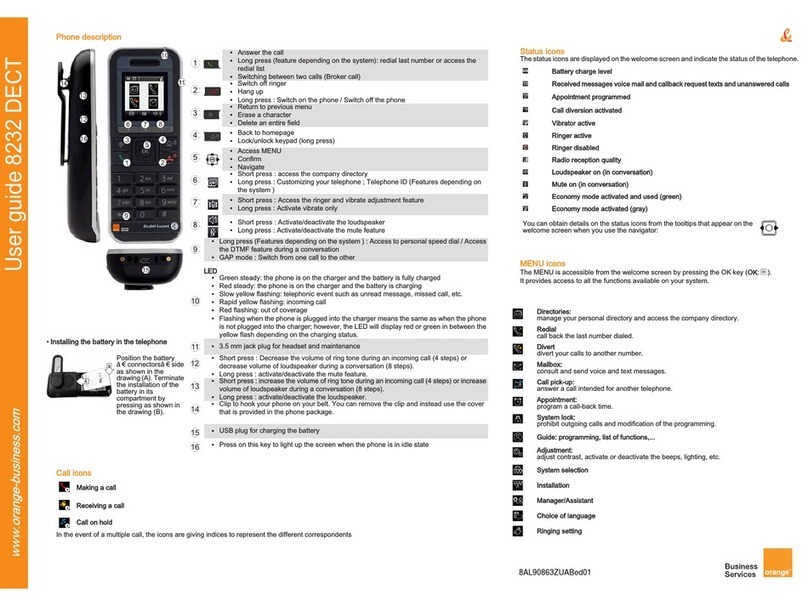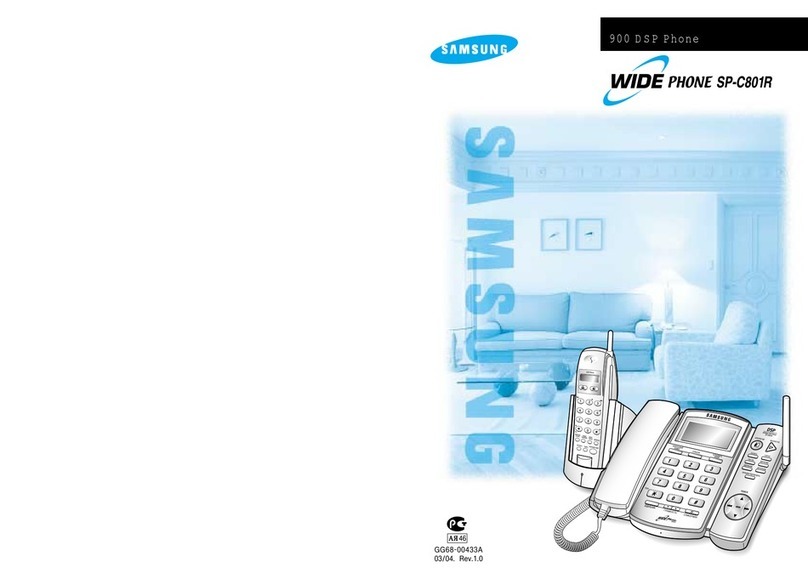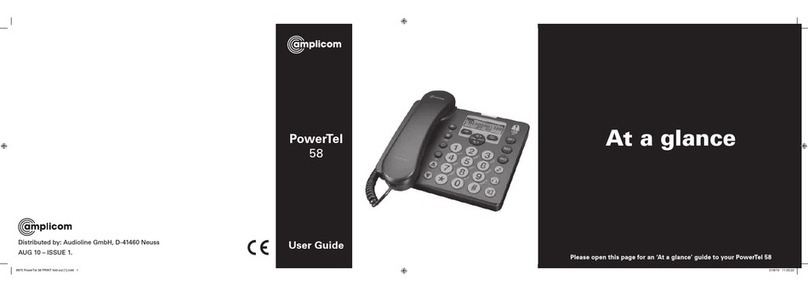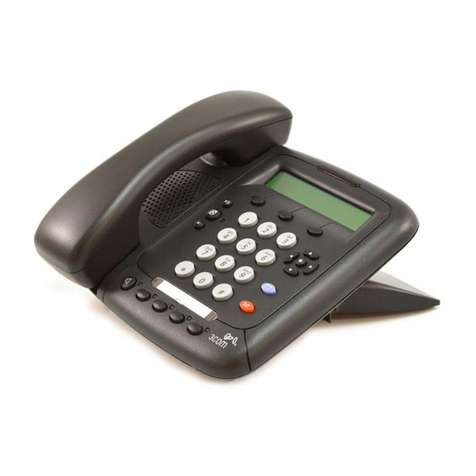
SECTION C70.201.01
1.03 For installation of 661A transmitter and
A13A cord, refer to C Section covering 600-
type telephone sets.
Self-switching Circuit
1.04 Self-switching is the automatic transfer
from receiving to transmitting condition.
This circuit is controlled by a signal transmitted
by voice, room noises, or loudspeaker. The level of
signal necessary to cause switching has been pre-
determined. .
1.05 For lAl speakerphone installation, place
the audible signals where there will be no
interference with the self-switching feature. It
may be necessary to lower the volume of the
audible signal.
2.00 ADJUSTMENTS AND TESTS FOR
1A1 SPEAKERPHONE
ftAmplifier potentiometers and the poten-
tiometer on the applique (part of con-
trol unit) have been set with a test set
and ahall not be changed.
2.01 Adjustments consist of connecting the SP2
loudspeaker lead to various terminals of the
KS-14964, List 3 control unit. Proper connections
compensate for the acoustic reverberant condi-
tion of the room by inserting several values of
resistances in series with the loudspeaker.
2.02 If self-switching occurs during a test call,
the SP2 loudspeaker lead should be con-
nected for a more reverberant room condition. It
is, however, desirable to keep the resistance in
series with the SP2 loudspeaker lead to a
minimum.
2.03 As a guide in connecting the SP2 loud-
speaker lead for room adjustments, rooms
are classified into four types:
• TYPE 1 - Low Reverberation
Page 2
A room with very little echo or reverbera-
tion will have a large amount of sound-
absorbing material such as acoustic ceiling
treatment together with carpeting or rugs,
window or wall draperies, and upholstered
furniture. For _this type of room, connect
the SP2 loudspeaker lead to terminal 14 of
TSI.
• TYPE 2 - Moderately Low Reverberation
A room with a moderate amount of rever-
beration will have either carpeting or
acoustic-treated ceiling, and perhaps drap-
eries or upholstered furniture. Connect the
SP2 loudspeaker lead to terminal A of the
applique unit.
• TYPE 3 - Moderately High Reverberation
A room with this level of reverberation will
have less acoustic treatment than TYPE 2.
For this condition, conn.ect the SP2 loud-
speaker lead to terminal B of the applique.
• TYPE 4 - High Reverberation
A room with high reverberation will have
practically no sound-absorbing qualities. In
this condition, the SP2 loudspeaker lead
should first be tried on terminal B of ap-
plique and, if self-switching occurs, be
moved to terminal C of the applique.
ftA void using terminal C unless false gain
switching is objectionable.
D
3.00 TESTCALL FOR 1A 1 SPEAKERPHONE
When all connections have been made:
• Place a call to test desk.
• Adjust the loudspeaker volume to a mod-
erately loud listening level.
• Have the test deskman repeat the sentence,
"In what suburb does Joe live," several
times.
• If installer detects choppiness in the sen-
tence, particularly in the first b in suburb
and the t in what, connect SP2 loudspeaker
lead to the next terminal that adds resist-
ance (eg, terminal 14 to A and so on).
• Repeat this test at a high-listening level by
turning the volume control clockwise.
• When there is no choppiness, the room ad-
justment is satisfactory.
